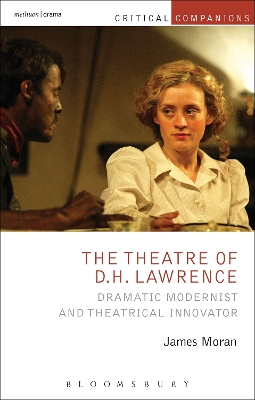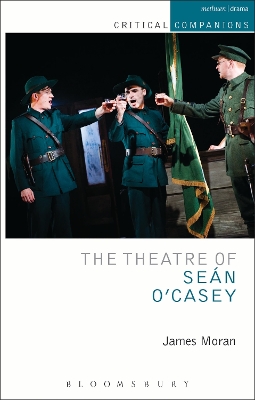Critical Companions
2 total works
This is the first major book-length study for four decades to examine the plays written by D. H. Lawrence, and the first ever book to give an in-depth analysis of Lawrence's interaction with the theatre industry during the early twentieth century. It connects and examines his performance texts, and explores his reaction to a wide-range of theatre (from the sensation dramas of working-class Eastwood to the ritual performances of the Pueblo people) in order to explain Lawrence's contribution to modern drama.
F. R. Leavis influentially labelled the writer 'D. H. Lawrence: Novelist'. But this book foregrounds Lawrence's career as a playwright, exploring unfamiliar contexts and manuscripts, and drawing particular attention to his three most successful works: The Widowing of Mrs Holroyd, The Daughter-in-Law, and A Collier's Friday Night. It examines how Lawrence's novels are suffused with theatrical thinking, revealing how Lawrence's fictions - from his first published work to the last story that he wrote before his death - continually take inspiration from the playhouse.
The book also argues that, although Lawrence has sometimes been dismissed as a restrictively naturalistic stage writer, his overall oeuvre shows a consistent concern with theatrical experiment, and manifests affinities with the dramatic thinking of modernist figures including Brecht, Artaud, and Joyce. In a final section, the book includes contributions from influential theatre-makers who have taken their own cue from Lawrence's work, and who have created original work that consciously follows Lawrence in making working-class life central to the public forum of the theatre stage.
F. R. Leavis influentially labelled the writer 'D. H. Lawrence: Novelist'. But this book foregrounds Lawrence's career as a playwright, exploring unfamiliar contexts and manuscripts, and drawing particular attention to his three most successful works: The Widowing of Mrs Holroyd, The Daughter-in-Law, and A Collier's Friday Night. It examines how Lawrence's novels are suffused with theatrical thinking, revealing how Lawrence's fictions - from his first published work to the last story that he wrote before his death - continually take inspiration from the playhouse.
The book also argues that, although Lawrence has sometimes been dismissed as a restrictively naturalistic stage writer, his overall oeuvre shows a consistent concern with theatrical experiment, and manifests affinities with the dramatic thinking of modernist figures including Brecht, Artaud, and Joyce. In a final section, the book includes contributions from influential theatre-makers who have taken their own cue from Lawrence's work, and who have created original work that consciously follows Lawrence in making working-class life central to the public forum of the theatre stage.
This Critical Companion to the work of one of Ireland's most famous and controversial playwrights, Sean O'Casey, is the first major study of the playwright's work to consider his oeuvre and the archival material that has appeared during the last decade. Published ahead of the centenary of the 1916 Easter Rising in Ireland with which O'Casey's most famous plays are associated, it provides a clear and detailed study of the work in context and performance.
James Moran shows that O'Casey not only remains the most performed playwright at Ireland's national theatre, but that the playwright was also one of the most controversial and divisive literary figures, whose work caused riots and who alienated many of his supporters. Since the start of the 'Troubles' in the North of Ireland, his work has been associated with Irish historical revisionism, and has become the subject of debate about Irish nationalism and revolutionary history.
Moran's admirably clear study considers the writer's plays, autobiographical writings and essays, paying special attention to the Dublin trilogy, The Shadow of a Gunman, Juno and the Paycock, and The Plough and the Stars. It considers the work produced in exile, during the war and the late plays. The Companion also features a number of interviews and essays by other leading scholars and practitioners, including Garry Hynes, Victor Merriman and Paul Murphy, which provide further critical perspectives on the work.
James Moran shows that O'Casey not only remains the most performed playwright at Ireland's national theatre, but that the playwright was also one of the most controversial and divisive literary figures, whose work caused riots and who alienated many of his supporters. Since the start of the 'Troubles' in the North of Ireland, his work has been associated with Irish historical revisionism, and has become the subject of debate about Irish nationalism and revolutionary history.
Moran's admirably clear study considers the writer's plays, autobiographical writings and essays, paying special attention to the Dublin trilogy, The Shadow of a Gunman, Juno and the Paycock, and The Plough and the Stars. It considers the work produced in exile, during the war and the late plays. The Companion also features a number of interviews and essays by other leading scholars and practitioners, including Garry Hynes, Victor Merriman and Paul Murphy, which provide further critical perspectives on the work.

